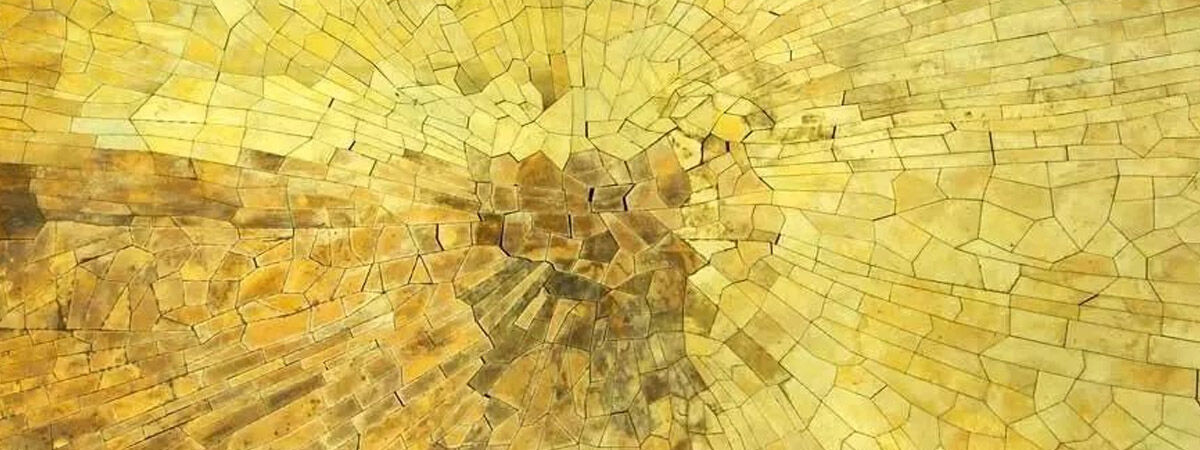Everyday Legend Birmingham Exhibition 2018
EVERYDAY LEGEND: AN EXHIBITION OF CONTEMPORARY ART FROM CHINA
DATE: SEPTEMBER 4 - OCTOBER 4, 2018
VENUE: SCHOOL OF ART, BIRMINGHAM CITY UNIVERSITY
This exhibition is curated by Everyday Legend International Network Project Principal Investigator, Jiang Jiehong

During the 20th century, China experienced dramatic social, political and cultural transformations. From the 1950s, major cities were industrialised, and historical architecture and cultural heritages severely neglected or destroyed. The late 1960s provided an extraordinary example of political mobilisation directed against material and cultural vestiges. Soon after, the Open Door policy (1978) instigated economic reform, while Western culture began to permeate everyday Chinese life, initiating a gradual transformation towards an ?internationalised? style of living. Today, in China, traditions of arts and craftsmanship have been interrupted. The consequence of this unique situation is a state of cultural anxiety which offers opportunities and challenges, particularly in the field of art.
The his the second edition of the exhibition for the international project, the first edition was exhibited in Shanghai in 2016.
Liu Jianhua:Filled
Ceramics, perhaps one of the oldest materials of craftsmanship in China, have always formed the basis of Liu Jianhua?s visual work. Through means of ancient firing techniques and traditional processes of making, the artist reflects on today's society. When a certain material becomes part of contemporary artistic language, it not only contributes as a set of 'vocabulary', ornate, simple or sophisticated; more importantly, the rules governing the intangibles resulting from the traditional craft and production process constitute the 'grammar' of this language. Filled explores the limits of craft techniques within the domain of a traditional 'grammar', as the work converts minute changes observed in the realms of everyday nature into an aesthetic form, and thereby shapes the artist?s personal and specific language system. It brings to mind a plate overflowing with crystal-clear spring water, as if disturbed for an instant, its surface still moving with ripples, or animated into a story unfolding in the language of ceramics.
Zhao Zhao:Lighter
Zhao Zhao used jade found in Hotan, Xinjiang, which originally came from the 4,000-metre-high Kunlun Mountains, to carve an actual-size version of a cheap, mass-produced everyday item - a lighter. The work only preserves the exterior appearance of the plastic lighter, and therefore is naturally devoid of its original functionality. This months-long and meticulous work of exquisite craftsmanship was expended on a daily consumer product that can be manufactured in the blink of an eye or discarded without a thought. Both are to be fondled lovingly, either in the context of elegant traditional culture or in that of the consumerist daily life of our present time, whilst the translucent and supremely luxurious quality of the stone contrarily assumes a cheap and low-grade shape.
Yu Ji: Flesh in Stone
Trained in Western realistic methods at an art academy for many years, Yu Ji decided to return to a Chinese aesthetic system, a fundamentally different world. The artist appropriates the traditional language of Buddhist statues to craft a series of sculptures out of cement. The work collects a range of components of human bodies, the appearance of which still preserves the rough texture of cement, including the traces of mould rims. These body parts are made in shapes which are dissociated from the Western systematic categories they are neither figurative nor abstract, but something in-between. They are naked, mercilessly affixed to the walls with metal brackets. One might fail to read on these bodies any cultural, social or political identity; even sexual features are attenuated. While these bodies might appear fragmentary on the level of physical appearance, in the artist's view, once any identifying signs are cleared, they are in fact more complete, or they simply become purer bodies.
Hu Xiaoyuan: Momentary Place
Many of Hu Xiaoyuan's works make use of traditional fabrics and found objects from daily life. From 2015, the artist visited a number of sites in Beijing that had been ruined by unsafe construction materials, and she collected steel bars that had been meant to be used as a tension device in reinforced concrete structures. In Momentary Place, Hu builds a series of new installations with these discarded steel bars, appearing withered, diseased or distorted, and with organic raw silk (xiao) which had been purposefully aged in an outdoor environment for over a year, and immersed, matured and worn by the seasons. They are the simplest structures, repaired and revived through her practice in a most refined and meticulous way, as house, pavilion or tent an imagined dwelling (or habitat), where the natural meets the industrial; the past meets the present; the spatial meets the temporal. As the artist notes, we are all wondering from one moment, one place, to another, as a process, and an outcome.
Zhao Zhao: Fragments
Following a century of political and cultural transformations in China, tradition has become history to be encased in museums, and can be interpreted as a variety of legends; a fragmented reality. This work, by Zhao Zhao, appears to be more critical on everyday existence in contemporary China and made as a statement of this potential anxiety. Immediately after a major explosion rocked the city of Tianjin in August 2015, the artist was one of the first to arrive at the scene. He returned with a large piece of broken glass from the impact of the explosion as evidence of this tragedy. Through a challenging process over an entire year that required extremely precise techniques of cutting and polishing, the artist reproduced thousands of the fragments of glass in copper, assembled as a complete metal plate. It resembles a typical minimalistic artwork at first glance, but through the extraordinary craftsmanship ? the transformation of the original glass into an industrial object, or a geometric abstraction projecting a utopian vision, reimagines everyday reality.
*Image: Zhao Zhao, Fragments (2014)